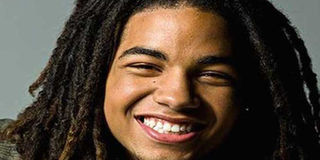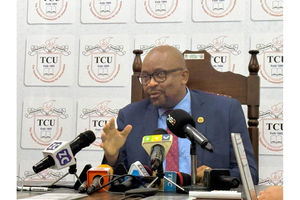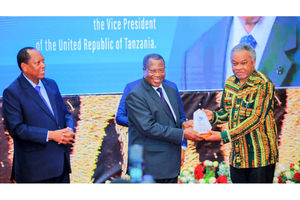Dreadlocks: is it faith or just another fashion statement?

Several people now have a reason to spot on dreadlocks. PHOTO | FILE
What you need to know:
In fact, some women admit that men look cool with dreadlocks on and therefore adding a special appeal for the hairstyle, which they also says is easy to maintain.
Salome James is a young graduate who has just completed her bachelor’s degree at Ardhi University, for the years she spent at campus she spotted dread locks.
“When I joined University it was the coolest thing every girl wanted to spot, so that is how I ended up spotting the hairstyle,” she says.
She neither follows any Rastafarian beliefs that are commonly associated with dreadlocks nor does she even know certain principles of the faith.
“No, No, I am not a Rastafarian, to me this is just a cool hair style and that is all, I don’t even like reggae music,” she enthuses.
Her admission and others’ ushers in a popular debate that that probably 90 per cent of the ‘dread locked men and women you see on a daily basis are not true Rastafarians.
In fact, some women admit that men look cool with dreadlocks on and therefore adding a special appeal for the hairstyle, which they also says is easy to maintain.
“It could go either way but in today’s context many people who spot this hairstyle do it out of fashion demands. I don’t mean that there are no people who believe in true Rastafarianism,” DJ Cosmo once told The Beat. But does one have to grow dreadlocks to be a Rastafarian? “The perfect answer to this is yes because dreads it is fundamental to vow...and to be a Rastafarian without it contradicts the idea,” says a pundit.
East African roots
Dreadlocks are not unique to Jamaica and Rastafarians. The dreadlocks hairstyle is believed to have originated from Africa and was worn by various tribes. The earliest tribe that this hairstyle can be attributed to is the Maasai of East Africa. Many of the warriors wore this hairstyle. They sometimes dyed their hair red with root extracts.
Many hair stylists have with time across the globe mastered the art of making and channeling dreadlocks growth into the style of choice. With a few simple steps and some modern day products, it can be made into the most pleasant hair style around.
Dreadlocks in Jamaica
The dreadlocks hairstyle first appeared in Jamaica during post emancipation days. It was mainly used by Afro centric Jamaicans as a means of defiance by the ex-slaves to rebel against Euro-centrism that was forced on them. The hairstyle was originally referred to as a “dreadful” hairstyle by the Euro centric Jamaican society. It later evolved to the term now used: Dreadlocks.
Dreadlocks and Rastafarianism
Rastafarians believe that, just like Samson the Nazarite, a man’s strength rests in the length of the hair....and, he who chooses to cut it gives away that strength. This idea stems from the Nazarite vow written in the book of Leviticus 21:5.
“They shall not make baldness upon their head, neither shall they shave off the corner of their beard nor make any cuttings in their flesh.”
The belief in the weakness of cutting of the dreadlocks was used as a way to intimidate Rastafarians in Jamaica in the past, as they would be arrested and their hair cut off. This was one of the reasons many of the early Rastafarians moved to isolated areas of the Island.
To many Rastafarians, dreadlocks also symbolises the mane of the lion in the Lion of Judah, which is one of titles given to all Ethiopian Kings. Emperor Haile Selassie was also very fond of lions and had them as pets around his palace. The lion is also seen as an animal that is gentle but powerful when provoked. In the 1930s, almost a century after the emancipation from slavery, Jamaican Rastafarians adopted dreads as one their foundational principles.
As time went on, the idea slowly spread throughout the Island as more and more dreadlocks appeared. To grow it, Rastafarians would simply not comb their hair. Instead they would wash it, keep it clean, twist it, and let it to grow.
Today dreadlocks have become very popular around the world as millions have embraced it and therefore wear it just for cosmetic purposes.
Regardless of how you look at it, Rastafarian dreadlocks has come a long way. Who would have thought that a kinky hair style that originated in Africa, took up residence among a small group of Jamaicans would become one of the most popular hair styles in the world?



